Oak Farm Montessori
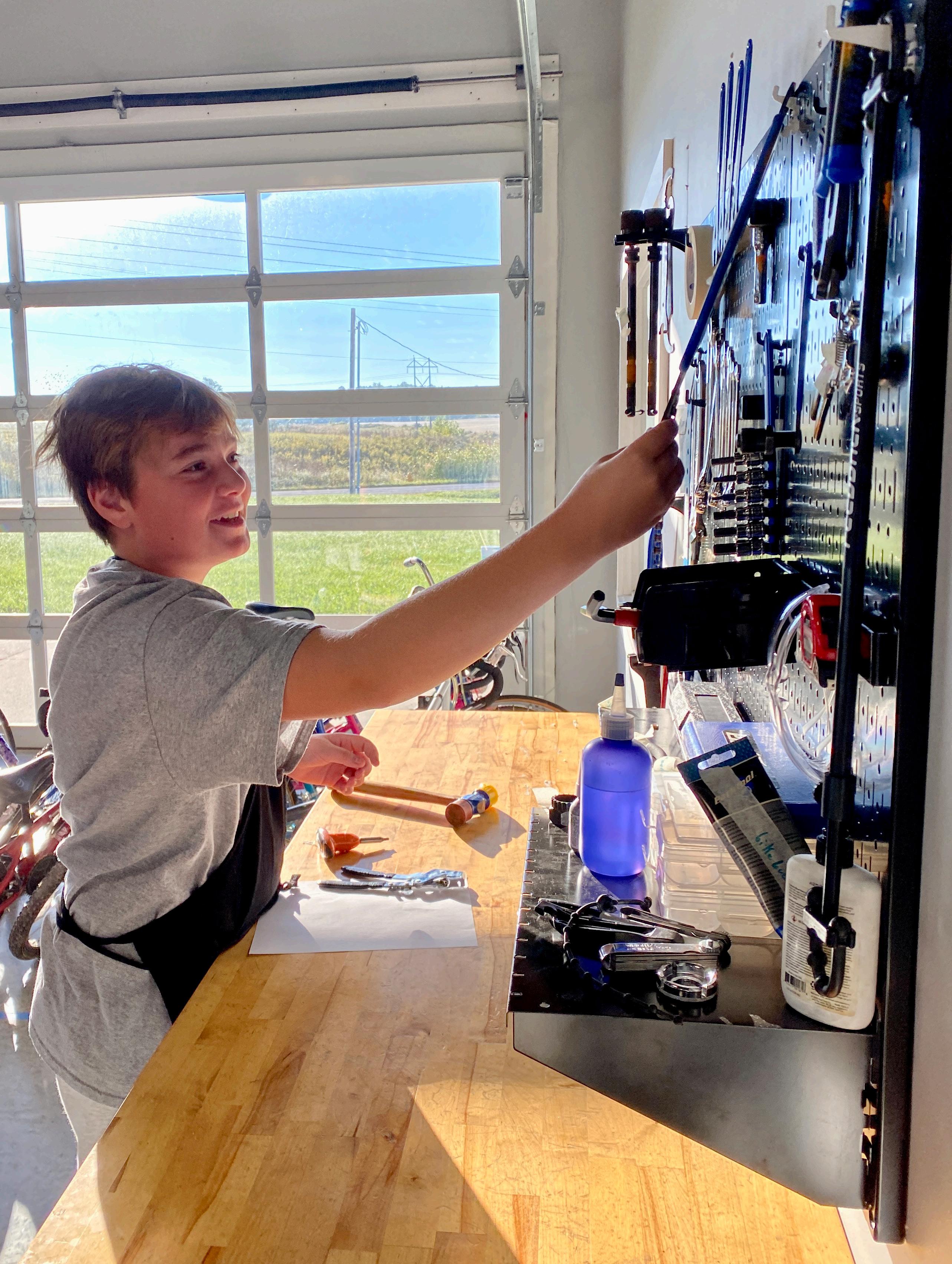
November 2022
Establishing a love of ‘work’ is fundamental to the success of a Montessori classroom. Teachers prepare the well thought out environment, provide guidance in classroom expectations, model grace and courtesy, present detailed lessons and encourage students to choose work that brings them joy.
Dr. Montessori called this process normalization. Which, according to Dr. Rita Shaefer Zener, means “becoming a contributing member of society”. But why do we strive for this process and how does it look different from a traditional classroom? Firstly, the preparation of the teacher. Instead of being tasked with filling up the child’s mind with knowledge, she is taught to observe and present lessons that speak to each individual child as they are ready for the material. Lessons are first given silently to draw attention and concentration to the material itself and its direct aim. The child is then encouraged to practice the lesson over and over as they discover extensions and gain satisfaction in the work. Like a small community, students learn social responsibility as there is only one specimen of each work. If a classmate is already using the small bead frame, the child must either wait or choose a different work.
By this time in the school year, most classrooms have the ‘hum’ of a normalized classroom. But, it is the groundwork that begins the first day of school that allows the success of each individual student. Montessori identified three stages in the process: the child does something because they want to, the child does something because he/she is asked to do it, and finally the child does something because they know it is right. By building character and self-discipline from within, the future contributing adult is being created through a love of work.

As you read through the articles this month you will see, firsthand, how the Montessori philosophy creates an environment ripe for learning, engagement and satisfaction.

Candice
HEAD OF SCHOOL
2
“If you do what you love, you’ll never work a day in your life.” Marc Anthony.
The ‘hum’ of Montessori

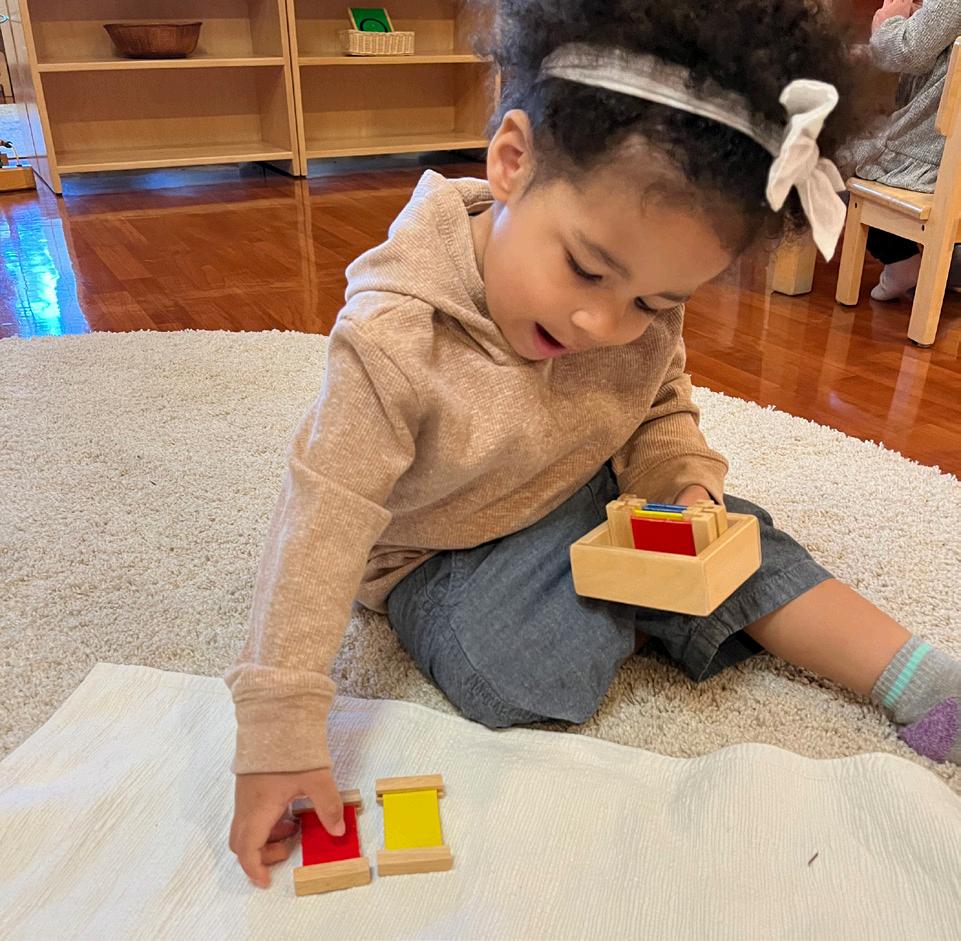
 April Adams, Toddler 1 Teacher
April Adams, Toddler 1 Teacher
According to the Webster dictionary, “normalize” means “to make something conform to.” This definition could not be further from the magic that Dr. Maria Montessori observed in a well functioning classroom. Montessori viewed normalization as something that naturally occurred when the children began to understand the classroom expectations. She believed that normalization came from the child’s love of work and order. “The children have shown love of work, which no one suspected to be in them, and a calm and an orderliness in their movements, which surpassing the limits of correctness have entered into those of ‘grace.’” she stated.
Being able to watch this process occur in a toddler environment shows just how amazing the Montessori method is. Most children come into the environment with no prior schooling and this is their first interaction with a classroom. They begin by watching their friends and learn to emulate the behaviors of the older children. The need to have their cubbies orderly, to put works back on the correct shelf, and to help prepare the tables for lunch are all things they develop independently; but, also together, within a certain timeframe. The quiet hum as the children work, their excitement when they see new materials on the shelf to choose, and the safety they find in the routines that we have set in place allow for them to work independently and amongst each other. Ultimately, the teacher can merely fade into the background of the room and observe the actions and behaviors of the children unfold.
In the toddler environment, we concern ourselves with order, concentration, coordination and independence (OCCI). Consistency in these areas allow for the children to feel secure in their environments and know what to expect from us and what we expect from them. They feel safety in the routine of our schedules and this safety allows for them to launch off academically in areas of the classroom like: practical life, math, language and sensorial. While the normalization of a classroom is different for each class, the feel is always the same; the feel of productive work being performed independent of the teacher by children who are eager to explore a prepared environment.
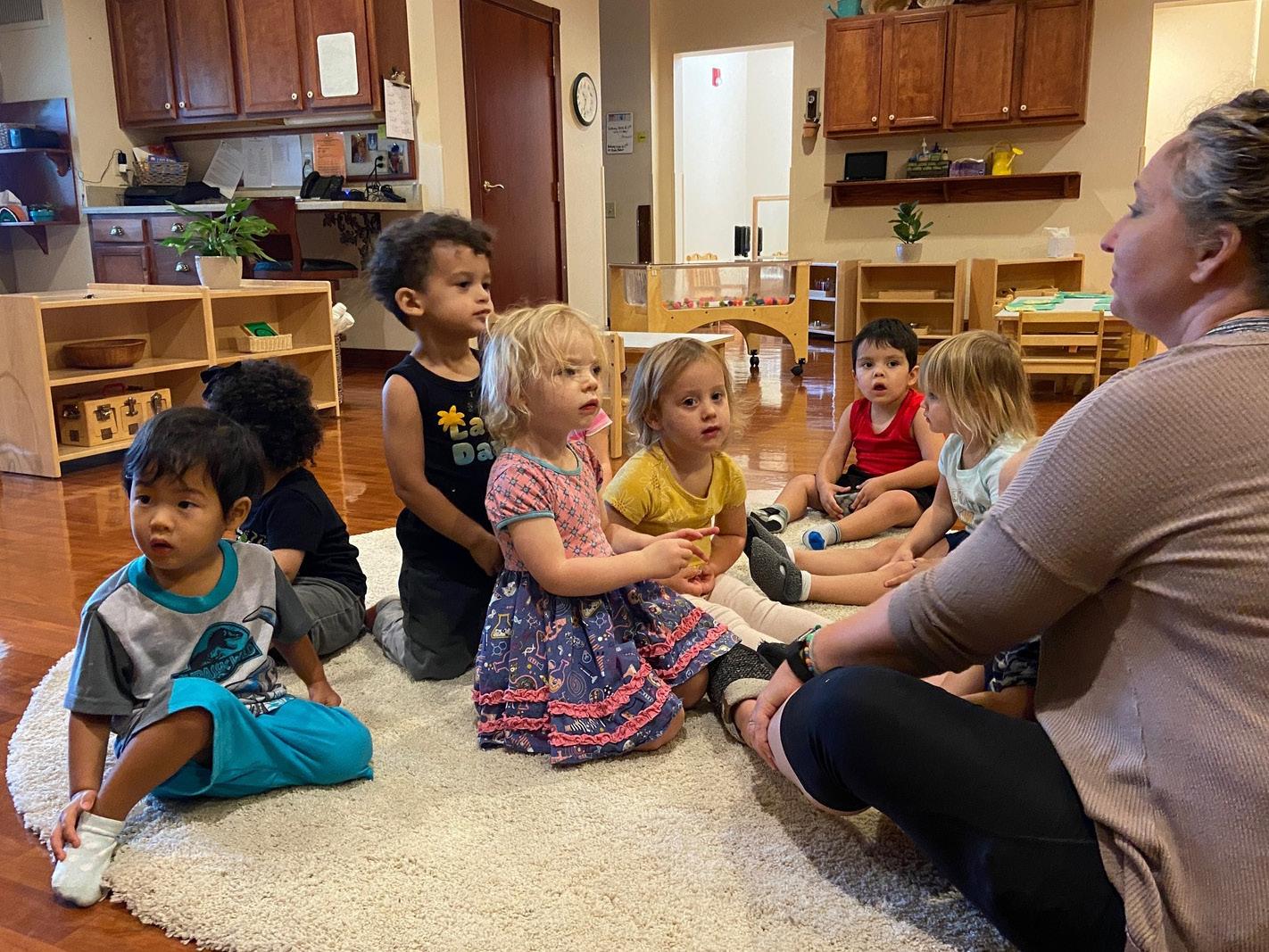
#supportourschool
Laura Zollman, Primary 1 Teacher
A beautiful transition...
It’s fall. The Oak Farm Montessori campus is beautifully outlined with a radiant tree line and in the classroom, there is a peaceful hum. That hum can be heard in classrooms across campus. Students and teachers are ‘normalizing’.
After weeks of being back in school, each student has received multiple lessons on how to choose, practice and restore their work. Normalization is the beautiful transition from new and exciting into meaningful and sustainable work. Each student has the tools to move freely throughout the classroom; allowing them to dive into meaningful work. This freedom requires a level of self-discipline. Since all work is meaningful, teachers strongly encourage students to move about the classroom without distracting others. When a class has normalized, the general hum of working students is surprisingly a peaceful thing. It’s a dream to observe this transformation and is part of the beauty and phenomenon that is Montessori. Doctor Maria Montessori even referred to normalization as “The most important single result of our whole work.” (The Absorbent Mind, 1949.)
A normalized work cycle consists of three stages:
• Preparation for work: Gathering the Montessori materials and preparing the mind.
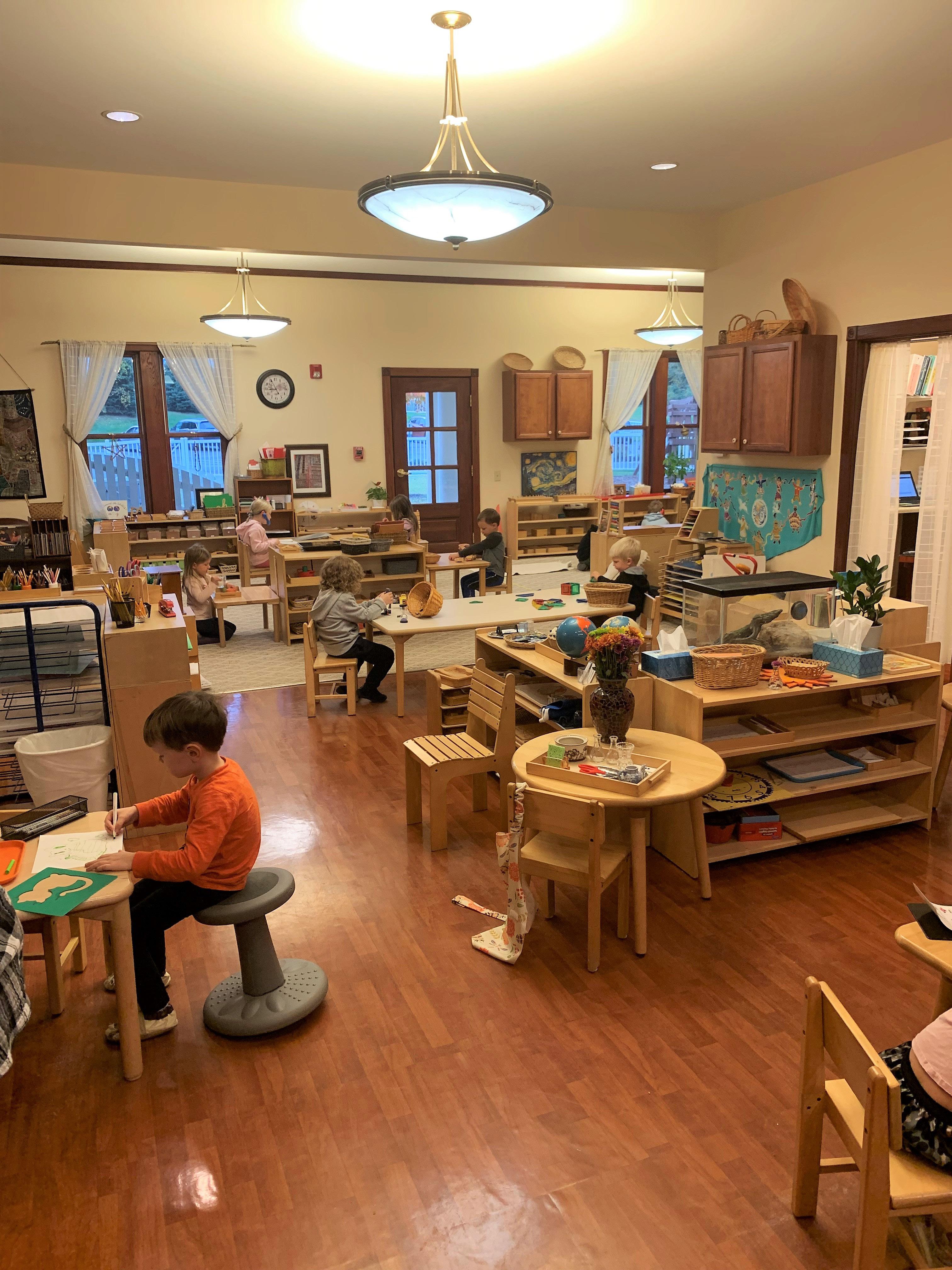
• Work: Focused concentration on the activity or material.
• Rest: Deriving satisfaction from completion of work (Montessoriacademy.com.au).
As children practice this process of concentration, their skills grow over time and lead to greater levels of concentration, a love of work and learning, as well as a desire for peace and self-discipline. Encourage this same sense of learning for your child at home by being consistent in your household expectations, use positive words to reinforce the desired outcome and redirect as needed.
4
Establishing routine
 Debbie Kovets, Lower Elementary 2 Teacher
Debbie Kovets, Lower Elementary 2 Teacher
The Lower Elementary school year begins with procedures, guidelines, observations, lessons, modifications, and classroom meetings. Each element is key to establishing normalization in the environment. Normalization is when children are able to work independently with purpose and focus for a sustained period of time.

Procedures are important for children to understand how to organize themselves for learning in the environment: folders and notebooks are introduced for specific work, lists are created for choosing work, plans are developed each morning to guide their work cycle, and resources are introduced to support student questions.
As students begin to understand and utilize the procedures, they begin to feel more confident and ready for independent learning.
Guidelines are the boundaries that allow the students to have freedom within limits. The boundaries include such things as: movement expectations, individual vs. partner work, lunch and snack guidelines, recording expectations, and voice levels.
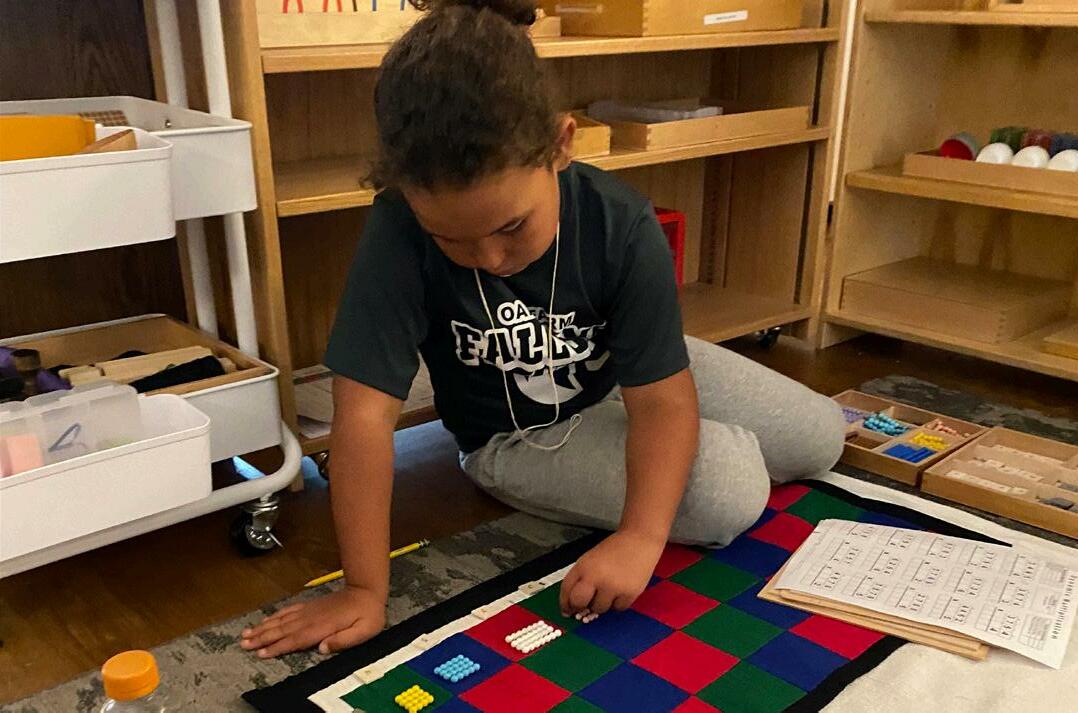
Through observation, teachers strive to identify the work that will be purposeful and inspiring for each child. Students who are inspired are anxious to get the work cycle started! They may also even ask for additional lessons to stretch their knowledge.

Classroom meetings provide the social/ emotional structure of the environment. Activities allow students to identify emotions that they may experience. The community brainstorms strategies for dealing with these emotions, and as students understand that emotions are respected and experienced by everyone, they work through them so they can return to learning.
The normalized lower elementary environment truly inspires all students to reach their potential.
#supportourschool
To enter a learning environment where students are engaged and immersed in their learning is a testament to Dr. Montessori’s philosophy and the diligent work of our faculty. One of my favorite quotes from Maria Montessori is, “The greatest sign of success for a teacher... is to be able to say, ‘The children are now working as if I did not exist.’’ To create and facilitate learning in such an environment, requires educators who embrace Montessori principles and are reliant upon what they know from these unchanging truths. Montessori is a philosophy that promotes intrinsic vs. extrinsic learning and motivation. By following the child, their interests and academic trajectory, Montessori teachers encourage authentic and genuine learning; not just performing for a reward or acknowledgment.
The Eight Principles of Montessori were the result of the work of Dr. Maria Montessori did in the early 1900’s with underprivileged children in Rome. Over 115 years later, the principles are still being applied in classrooms around the world with great success. Montessori did not base her work upon outdated practices or latest trends; instead, her work is rooted in the unchanging truths of what children and young adults need to support their healthy development. What that looks like has evolved over time, but the eight principles guide that evolution. In a world where we often see educational methods become mainstream and then fade away or be replaced with a new technique, it is comforting to know that our children are given the opportunity to immerse themselves in a community that will be rooted in the same principles today, tomorrow and into the future. Maintaining such a community requires an investment in human and capital resources. We encourage our community to support the school with financial gifts of today, but also to consider a gift of tomorrow. To learn more about making OFMS part of your legacy with a gift that does not impact your finances today, please contact Kim Davidson for more information.
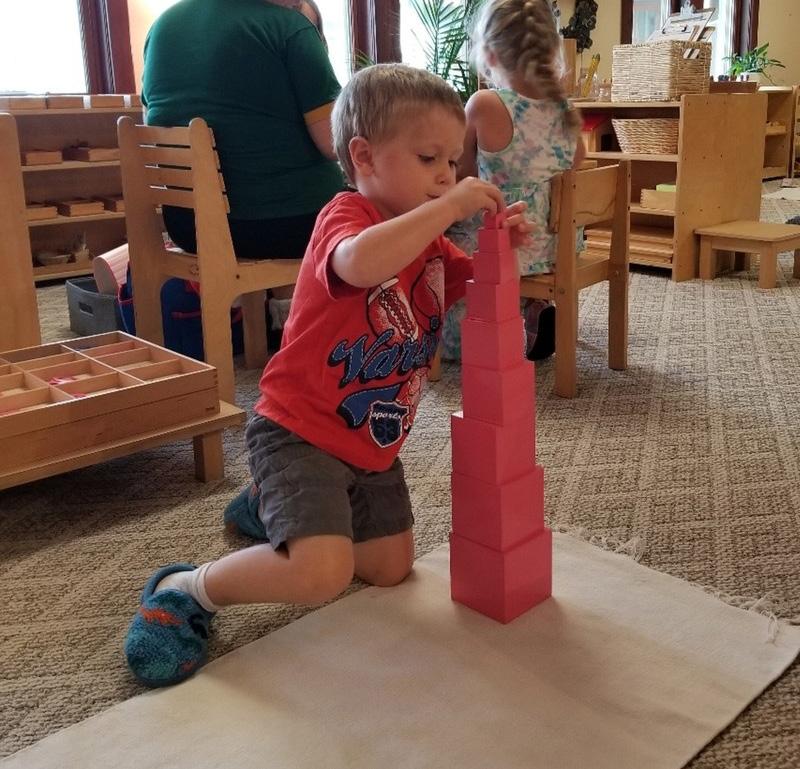

Lasting legacy
6
“Eight Principles of Montessori Education” by Dr Angeline Lillard from Montessori: The Science behind the Genius
1.
Movement & Cognition
2.
Choice
3.
Interest
4.
Avoiding extrinsic rewards
5.
Learning from and with peers
6.
Learning in context
7.
Teacher ways and child ways
8.
Order in the environment and mind
Kim
Davidson, Director of Strategic Partnerships
Early 1900’s Today
Creating SYNERGY
 Kavin Ley, TheaTre/MiddLe SchooL Teacher
Kavin Ley, TheaTre/MiddLe SchooL Teacher

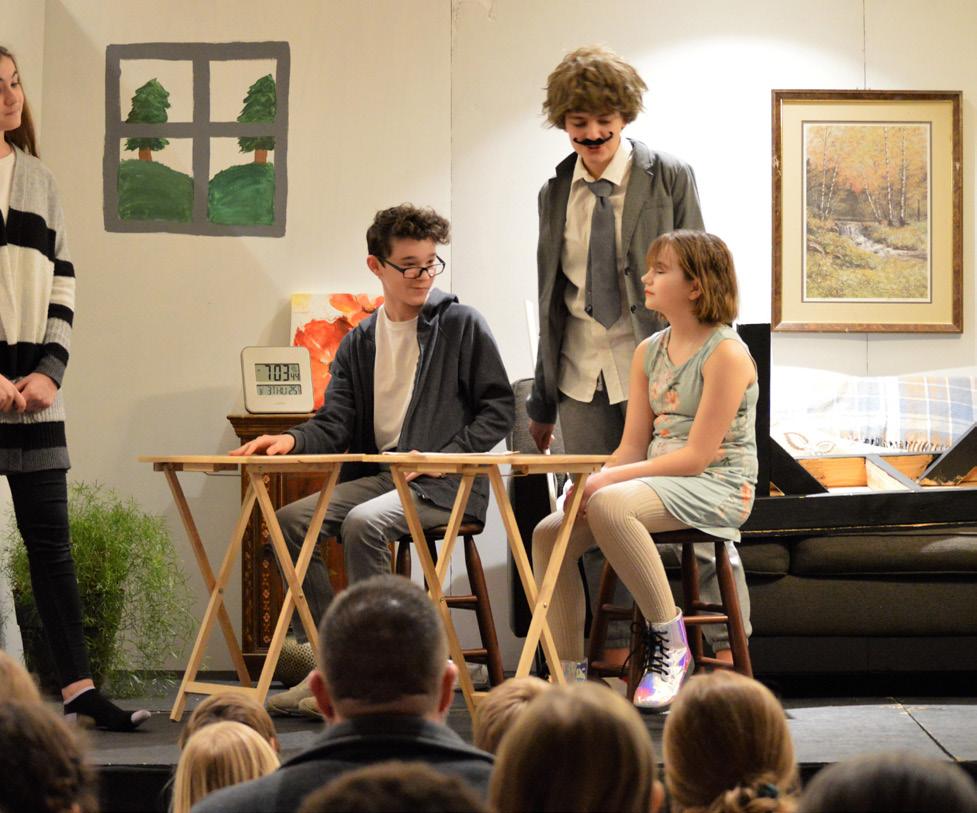


Two of the most beautiful things that the Montessori classroom can provide to children are the abilities of self-expression and choice in their work. Individuals develop their skills at their own pace and express mastery over those skills in a multitude of ways. When children have worked toward normalization in their work, independence leads to more effective learning.
In performing arts classrooms, normalization looks a little different! Rather than becoming independent as an individual, students work on collaborative, group work for the majority of their class time. Classes occur with predictability and organized lessons so students feel the flow of their time and can smoothly transition from one activity to another. Working in small groups within these organized lessons helps to develop synergetic learning while the group works independently.
Elementary music begins lessons each day completing “Beat Builders” before transitioning into solfege, singing, dancing, or playing instruments. Upper elementary theatre begins with practice using “Space Objects” before transitioning into group games, skit writing, and group performance. Students often practice working together, independent from other groups, to create or perform something unique. Normalization may look different in groups, but the results are the same–greater learning.
The skills built in these collaborative environments will be translated to other aspects of the students’ lives as well. This synergistic learning teaches them how to work on a team with others in school, at home, and in their future careers. Guiding students toward normalization helps solidify these skills and helps to build them into contributing members of society.
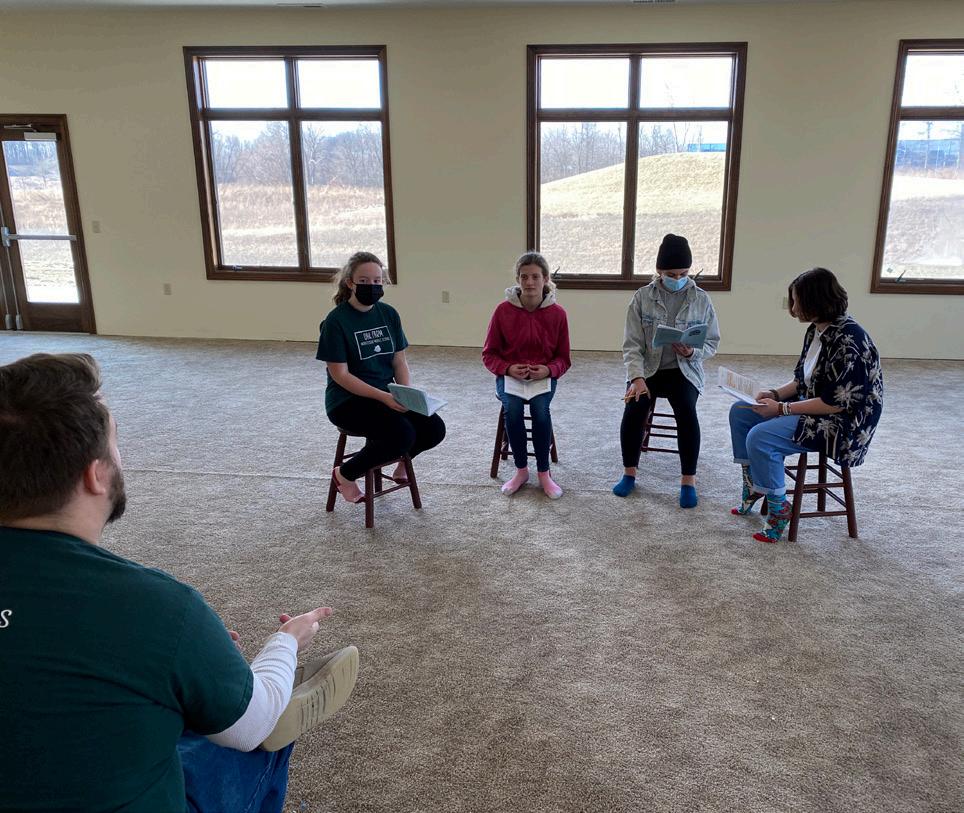
#supportourschool
The Montessori Method
Linda Hoffman
Upper Elementary 2 Teacher
Human development is what we do at Oak Farm Montessori. There are identifiable stages of development for children. When doing well baby check-ups, parents are given percentages for height and weight. Those percentages are based on typical physical growth. There are also typical stages for the development of motor skills, intellect, language acquisition, and socialization. Maria Montessori’s medical mind studied these typical stages and observed their absence in the children in her society who were atypical. She built work around those observations and applied her philosophy to atypical children. When she noticed changes to those children; a settling, a calming of the spirit, and growth in areas of motor skills, intellect, language acquisition, and socialization, she called it normalization.
Put differently, normalization is a natural process whereby students demonstrate a love of work, show ability to concentrate, have control over their bodies, and experience satisfaction and joy in accomplishments.
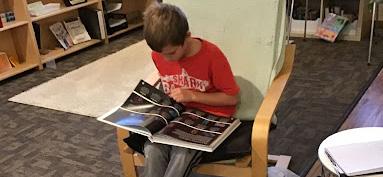
Dr. Montessori talked about processes that develop naturally. When these processes are impeded for a reason, the child will demonstrate behaviors such as talking just to
hear themselves, move their bodies clumsily, display inability to use their hands with purpose, and have minds that wander - unable to land on a thought for long, over or under socialization, and fatigue and frustration when working. She describes these as separate energies, not attributed to the personality of the child, but rather a disorganization of the personality.
Using her method, this disorganization can be resolved. Upper students move toward normalization as we set them up with clear guidelines and expectations. Work is taken to an appropriate place, not completed while walking or while it is on the shelf (self control). Work is replaced ready for the next person (building the sense of community and awareness of others’ needs). Voices are soft and low. Walking through the building is done with purpose. Entering and exiting the classroom, cubbies, and building is done peacefully. Timers are used to free the mind from worry of being on time for activities outside the classroom such as specials. A lesson is requested to use unfamiliar material. Work is done independently and recorded on a work plan.
Normalization occurs not because the
8
child is left to do as he likes, true freedom is achieved when the mind is stilled, joy is found in the work and the control over the body, it is a “consequence of development” (Dr. Joyce Pickering).
Concentration on meaningful activities is normalization. The child is considered normalized when this is observed on a regular and continuous basis. It might look like maturity - the ability to control oneself as well as consider the needs and desires of others.

Does this sound unrealistic? Are you thinking of your child’s behavior and the recent comments made on the progress report, and deciding this normalized child is a fantasy? Is this something Montessori made up in order to shame parents?
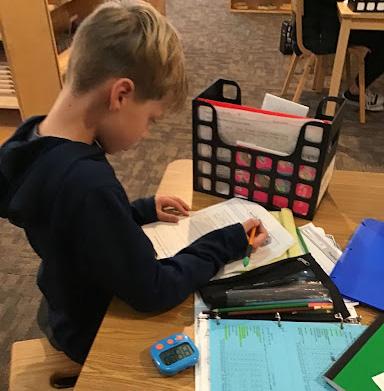
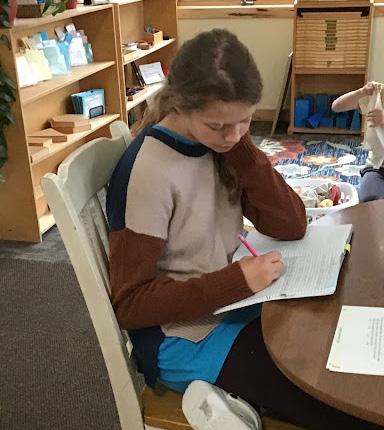
I can confidently say that normalization of the child is a real thing. Montessori based her theories on solid observation, and it is still true today. Students who arrive at Upper unorganized, boisterous, clumsy, and unfocused truly can arrive three years later at Middle School able to concentrate, keep track of their belongings and assignments, advocate for themselves for assistance, be trusted if left alone, and implement concrete ideas to help others. These qualities are more meaningful and lasting than simply storing facts and being exposed to information.
To say that a child is not normalized is not meant to insult. It is a way of communicating that typical stages of development haven’t occurred yet.
The genius of Montessori’s method is to give the child multiple opportunities to achieve that development: mixed age classrooms will have role models, materials are designed to suppress the desire to rush, lessons are given in how to move, speak, and behave gracefully. A great deal of time is spent in the Upper classroom guiding normalization without imposing judgment or punishment. We simply accept the students for who they are and provide a Montessori environment that inspires students to reach their potential through meaningful work.
#supportourschool
“
Education should not limit itself to seeking new methods for a mostly arid transmission of knowledge: Its aim must be to give the necessary aid to human development.”
- Maria Montessori
A window into
One of my favorite things is to stand back and observe students at work. Watching students perform their Erdkinder tasks each day on the farm provides a great opportunity to observe students at work at every level of normalization - doing important work because they want to, were asked to, or ultimately, because they know it is the right thing to do.
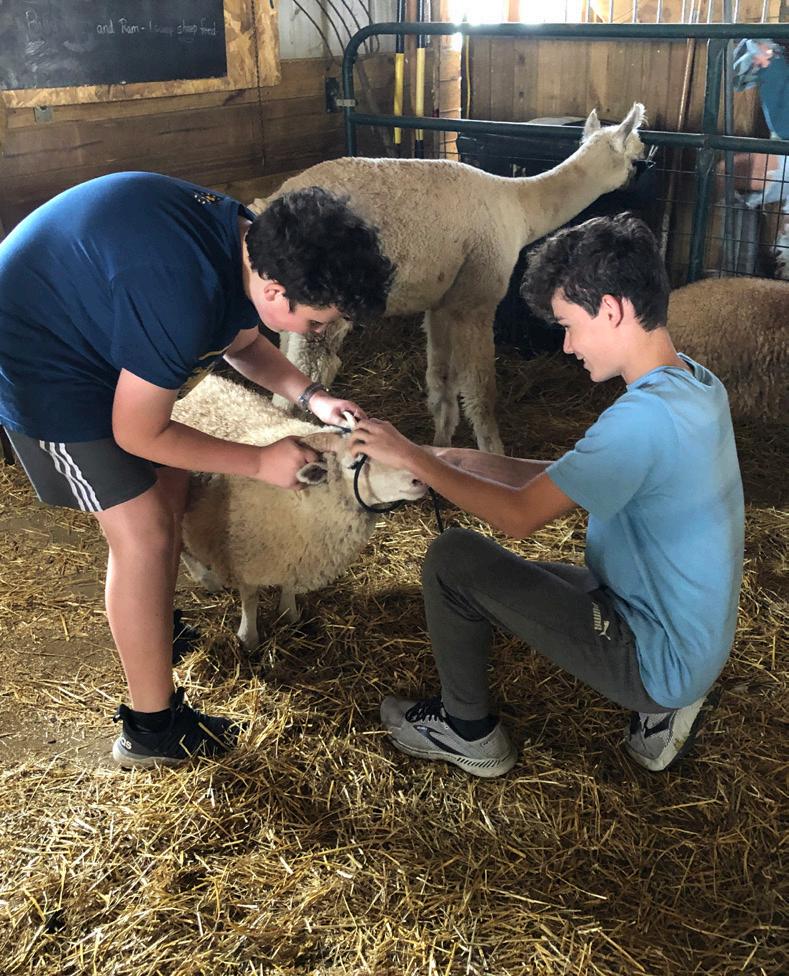

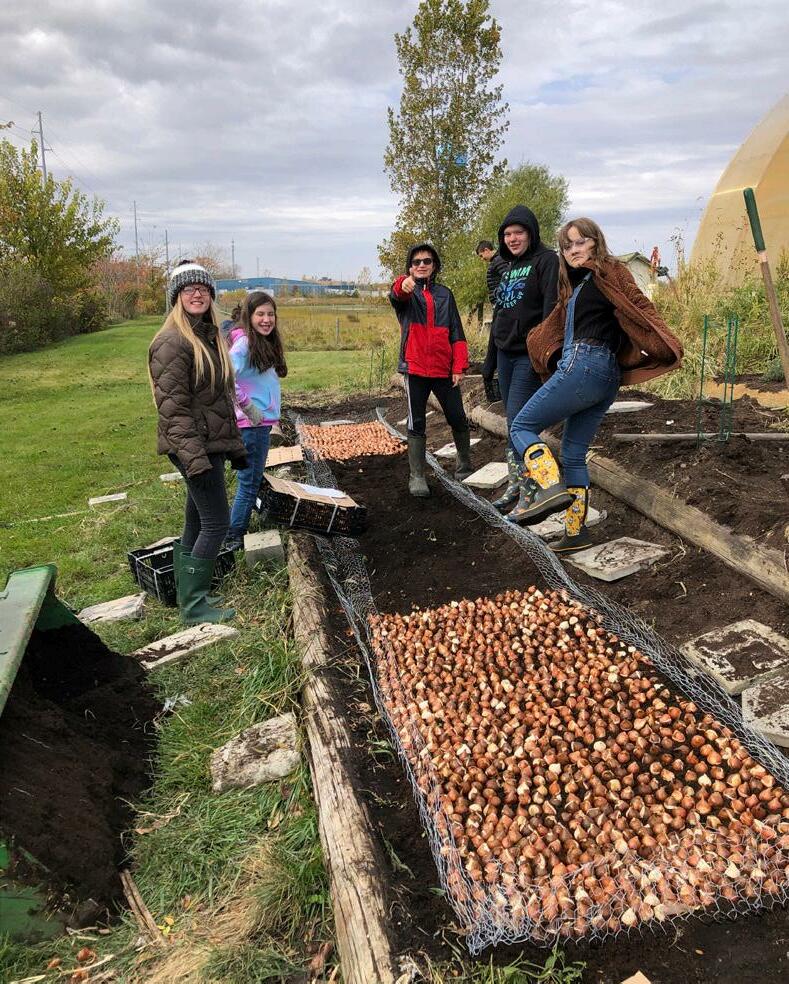
Students move about with purpose, feeding the animals, cleaning pens, and restoring the barn environment. It always amazes me how quickly they take ownership of their roles and responsibilities. There is usually a soft hum of voices as they interact with each other and the animals. The same rhythm of work is evident in the greenhouse space and micro-economy work area if we have prepared the environment and the students effectively. If you are aware of the three stages of normalization, you will observe students who reflect each stage on the continuum as they complete their daily Erdkinder work. Some embrace the work because they love it, some because they were assigned to it, and some because they understand their role and responsibilities in the larger community of the farm and world at large.
Normalization is a term used by Montessori to describe children who can concentrate on a task and throw themselves completely into the task at hand; independently and with self discipline. On the farm that means that they respect the learning environment, the animals and each other. Students developing these skills can work towards a common goal with a team as well as on their own. There is a constant ebb and flow on the normalization development continuum as they master tasks and encounter new challenges.
Erdkinder is the perfect setting to support the development of the four characteristics of normalization - love of work, concentration, self-discipline, and social skills. Fostering this work requires intentional scaffolding, through a well prepared environment and meaningful tasks designed to support the young adult’s journey to independence and self-satisfaction from their work. As Montessori suggested, a working farm is a perfect setting for our young adults to develop these characteristics!’
There is a lot of preparation required from both adults and students as we set up schedules, identify student teams, divide tasks, and learn new information and skills necessary for each Erdkinder assignment. This type of thoughtful preparation sets the stage for the purposeful
10
Crystal Leu, Middle Shool Farm Manager
into Erdkinder
work that is the heart and soul of every morning on the farm! The hard work of preparation is rewarded with moments like the one I described above. Moments when I pause, listen and watch as the students effectively and efficiently take on the work of maintaining a small farm and business on their own with a glow of confidence and a sense of ownership. Their focus and satisfaction with their work is evident!
On a regular basis we stop and reflect on this work and savor the feeling of accomplishment that accompanies the completion of good, hard work.One specific activity we use to reflect on the work the students are engaged in are discussions of some essential life skills found in the book, Cowboy Ethics: Ten Principles to Live By. These principles stem from the Cowboy Code of the West and have been adapted to help develop habits of mind essential for career and life success. As students reflect on these ten principles you can observe them progressing down the path to normalization, our ultimate goal for them. The ten principles include:
● Live each day with courage
● Take pride in your work
● Always finish what you start

● Do what has to be done
● Be tough, but fair
● When you make a promise, keep it
● Ride for the Brand
● Talk less, say more
● Remember that some things aren’t for sale
● Know where to draw the line
Our students have been developing normalization at every level of their journey at Oak Farm Montessori.
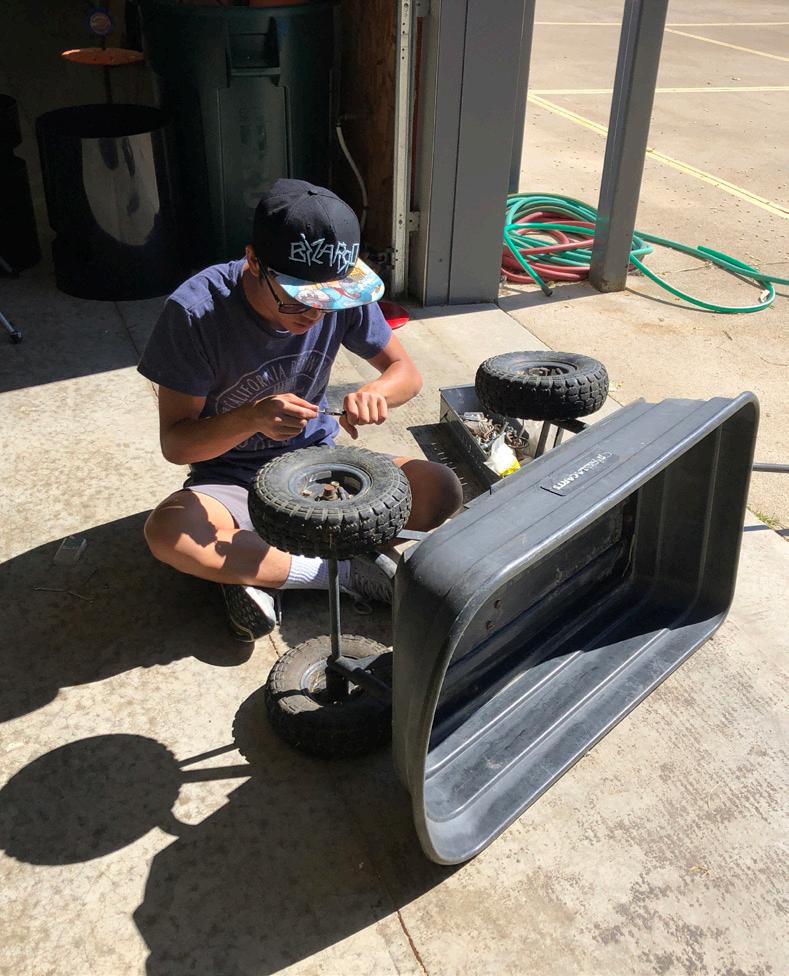
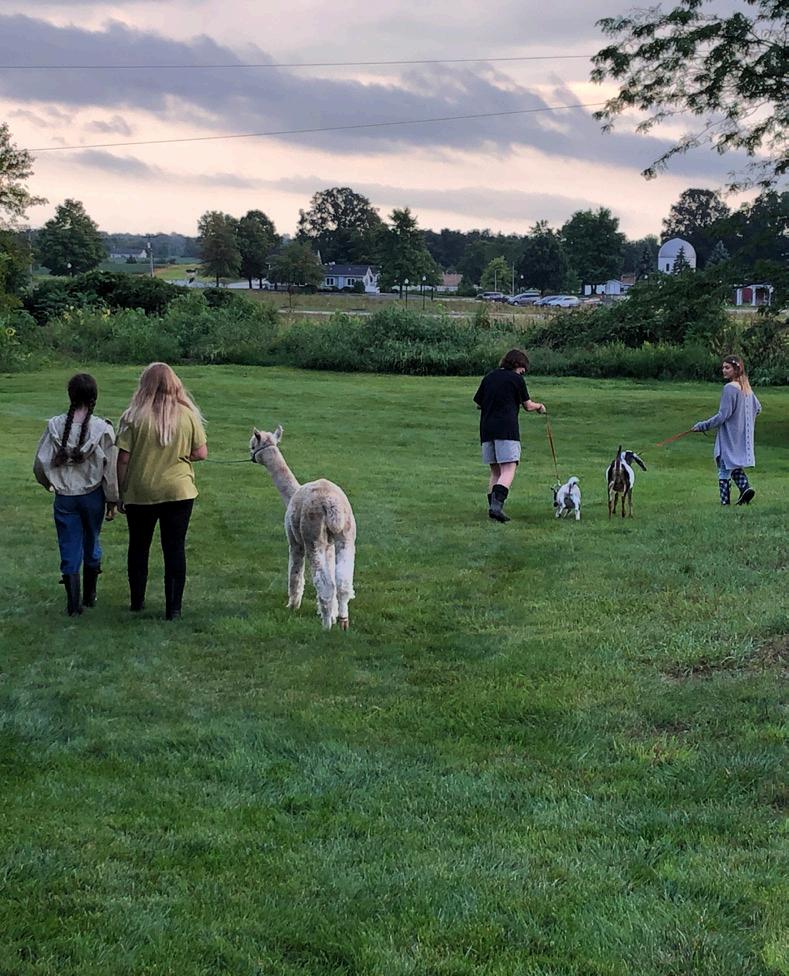
The Erdkinder work at the middle school level provides an amazing opportunity to support exponential development in this area by our young adults. They literally grow before my eyes as they engage with the real life setting of the Erdkinder “classroom!”
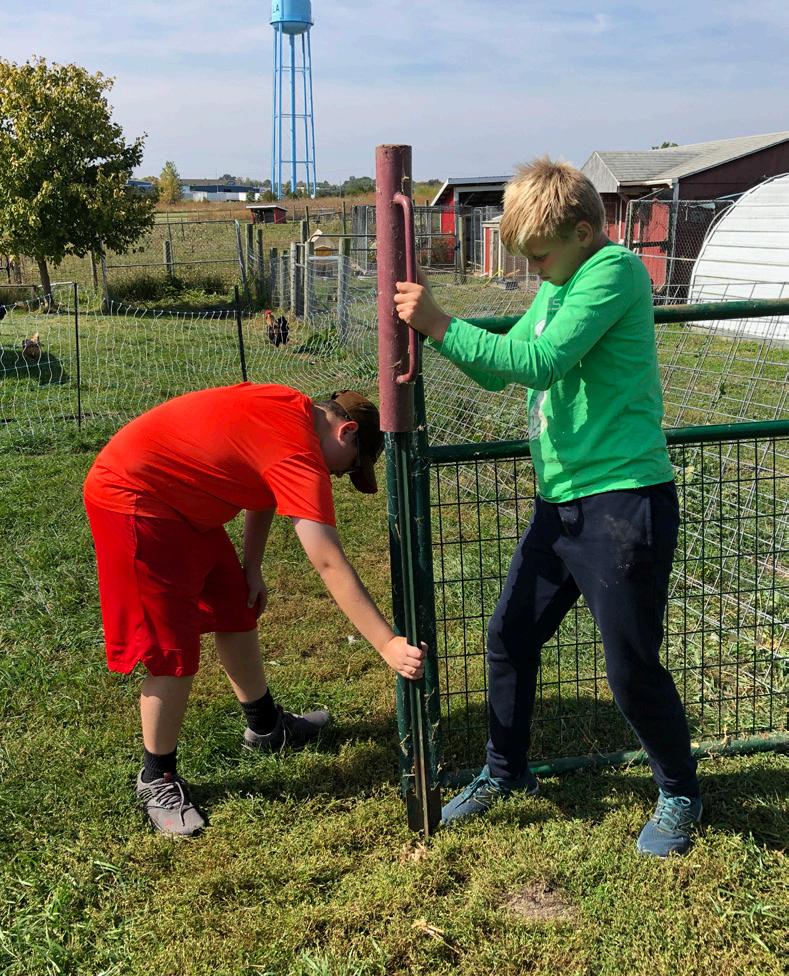
#supportourschool
Normalization at the high school level looks different in many ways from lower levels, but at its core, has the same importance and impact. Because high schoolers are able to embrace abstract concepts, the use of shelf work is minimal in most subject areas. Student work is oftentimes written or spoken. The manipulatives that they use are words, concepts, and ideas. Additionally, they use numbers, formulas and lab equipment. How do we help our students achieve normalization, the ability to work with selfdiscipline and independence, at the high school level?
First of all, every student starts at stage one when they enter the high school environment. Whether students have been in a Montessori environment for several years or this is their first exposure to it, the start of high school is a new and redefining stage. Normalization means that there is a lot of trial and error for how they will achieve the focus and self-discipline needed to complete their tasks and ultimately to maximize their learning. One way that we have worked with students this year is by having them create a ‘’sacred space’’ for work. Students were given the opportunity to move around the space in the high school to find a place where they will be able to find their slow and deep level of understanding. Their work is sacred and therefore, we want them to find a space to match that value. Another way that we are working towards normalization is with the sharing of chores. Again, the start of high school means that we begin at square one for how to work, restore the environment and maintain our space to the best of our abilities. Having larger and more capable bodies doesn’t automatically equate to well-done chores or consistent performance. As teachers, we try to consistently and patiently model how to complete a job and we also pursue the student who is not reaching normalization at their level of capability. It is an ongoing process but we have seen great teamwork and amazing results! In conclusion, as a high school team, we are learning and growing each day at how to do our best work for creating an environment where students are able to reach normalization. We have ups and downs, but the moments when we see a student achieve their goal through self-discipline, focus and self-direction bring us true joy and pride in our young adults.
Sacred Spaces
Rachael McGuire, Spanish Teacher

12


#supportourschool
A lifelong journey
Gena Grobarek, Ecoliteracy Coordinator

The Ecoliteracy program at Oak Farm Montessori School (OFMS) is driven by Dr. Maria Montessori’s standpoint that people and nature are intricately connected, and that understanding these connections is part of the development of the whole child. Through her writing, we can infer that Dr. Montessori doesn’t want us to see that living in harmony with nature is optional. At OFMS, we recognize a love of nature is developed at a young age. Additionally, nature is central to our well-being and that ecological processes support life. As a result, we view finding harmony with nature as a lifelong journey that begins as soon as we are able to interact with it. Our school embraces the importance of students gaining the ecological intelligence that Maria Montessori spoke of by incorporating opportunities for students to experience nature itself as a classroom. At every level, from infants and toddlers to our secondary school, students are spending time learning in the different ecosystems that we have across our campus.
In a nature classroom there are many variables that can challenge a class to reach normalization; the moment when students are peaceful, grounded, calm and settled and can independently concentrate and participate in learning. Some of the factors that can affect students in an outdoor setting include overstimulation, the weather, and the general security level that students perceive. To gain a sense of safety, students need repeated exposure to these outdoor classrooms. Not only are teachers responsible for creating an atmosphere of safety, but also need to prepare the outdoor environment with the appropriate tools for learning through exploration and observation. In their book, Forest School and Nature Pedagogy, Jon Cree and Marina Robb describe the goal of a normalized class in an outdoor setting: “A place has many characters, present and past, its secrets largely invisible until you have found time to explore it. Patience, determination, curiosity, and a quiet mind are required to reveal the attributes of natural features. Rocks, soil, slopes, light, plants, trees, birds, and insects reveal stories to us, gently providing meaning and context.”
An example of normalization in an outdoor classroom at OFMS is the Primary Kinderforest program. Students spend time every week immersing themselves in the base camps during an uninterrupted morning work cycle. There are several reasons why our primary students spend a morning in the forest, but one of the more important ones is to gain that sense of safety, and comfort in an outdoor classroom. If a class has reached normalization in the forest, you’ll observe that students are at peace, calm, and settled while exploring freely the space teachers have delineated as part of their forest classroom. You might see a few friends in deep concentration collaborating to build a fort, or a student using a magnifying glass to look at the texture of a shelf fungus growing on the side of an old tree stump. By the time students leave early childhood, they have a solid foundation that enables them to be able to deeply focus on more targeted outdoor Ecoliteracy lessons.
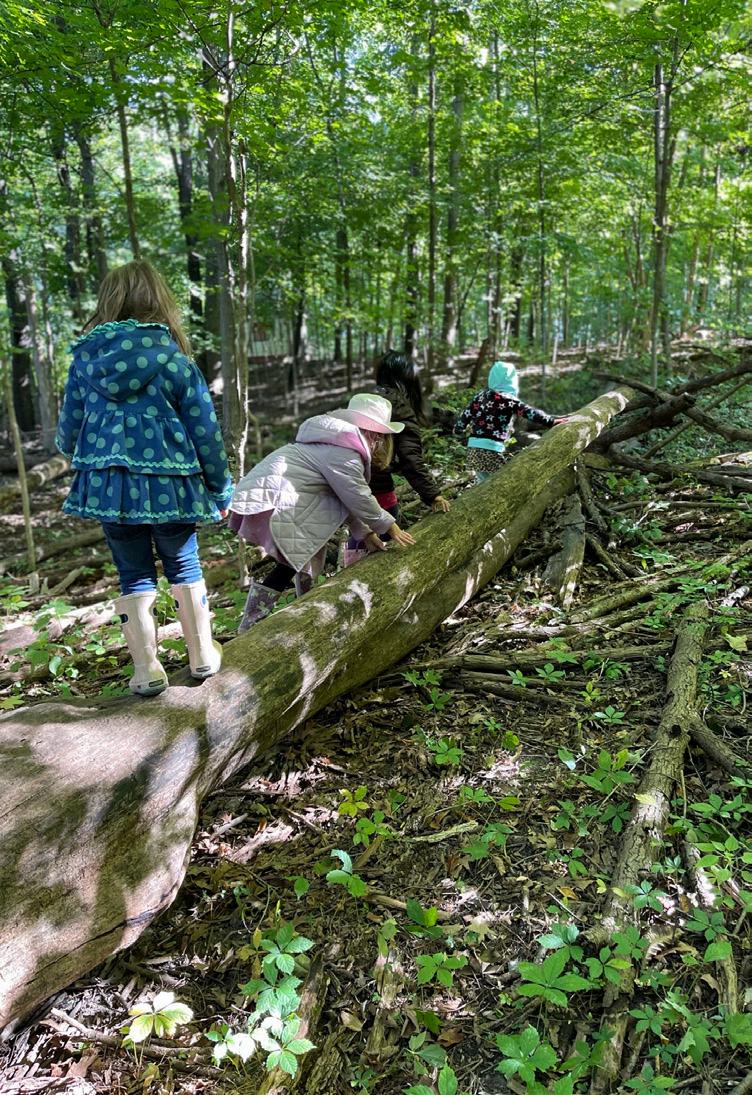
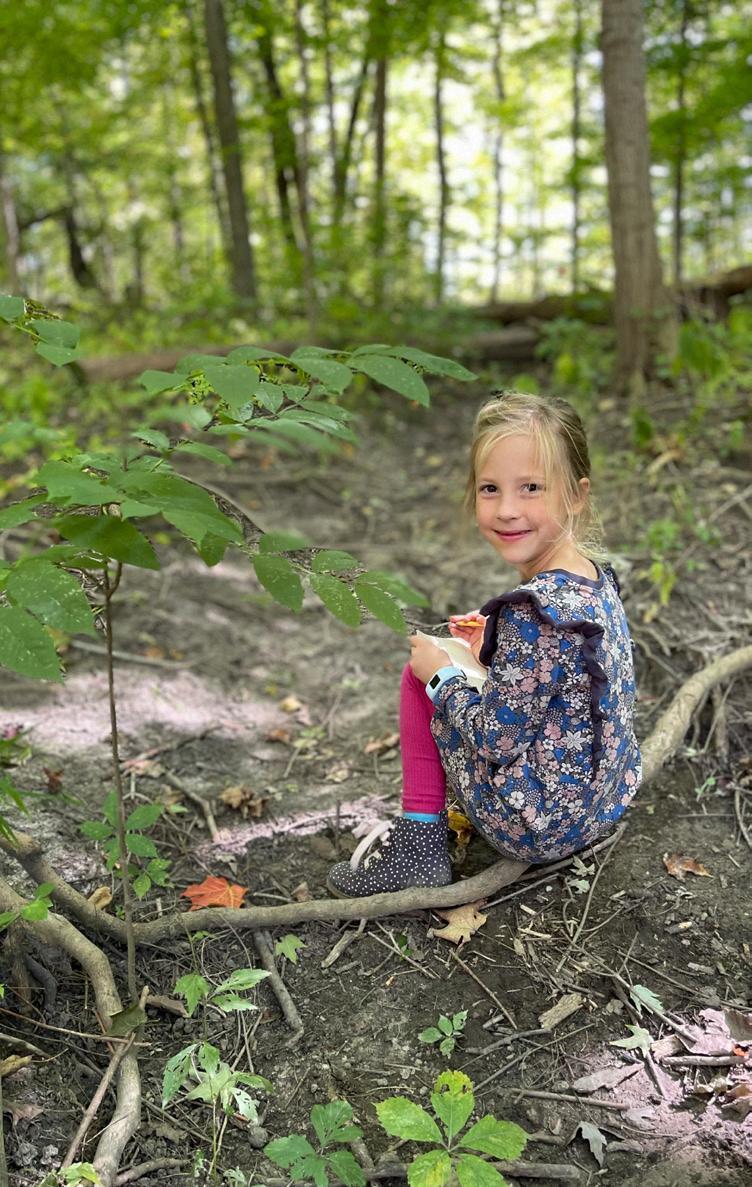
“The land is where our roots are. The children must be taught to feel and live in harmony with the Earth.”
Maria Montessori
november
November

november


Mark your calendars Founders Day Celebration november 10th, 2022 OFMS Day of Giving
10th, 2022 Community Coffee
18th, 2022 Grandparent’s Day
22nd, 2022 Half Day Dismissal November 22nd, 2022 S U P P O R T O U R S C H O O L VOLUNTEER TALL OAK FUND SGO DAY OF GIVING “To provide a Montessori environment that inspires students to reach their potential through meaningful work.” Oak Farm Montessori School | 502 Lemper Road | Avilla, IN 46710 | 260.897.4270 | www.oakfarm.org






 April Adams, Toddler 1 Teacher
April Adams, Toddler 1 Teacher




























